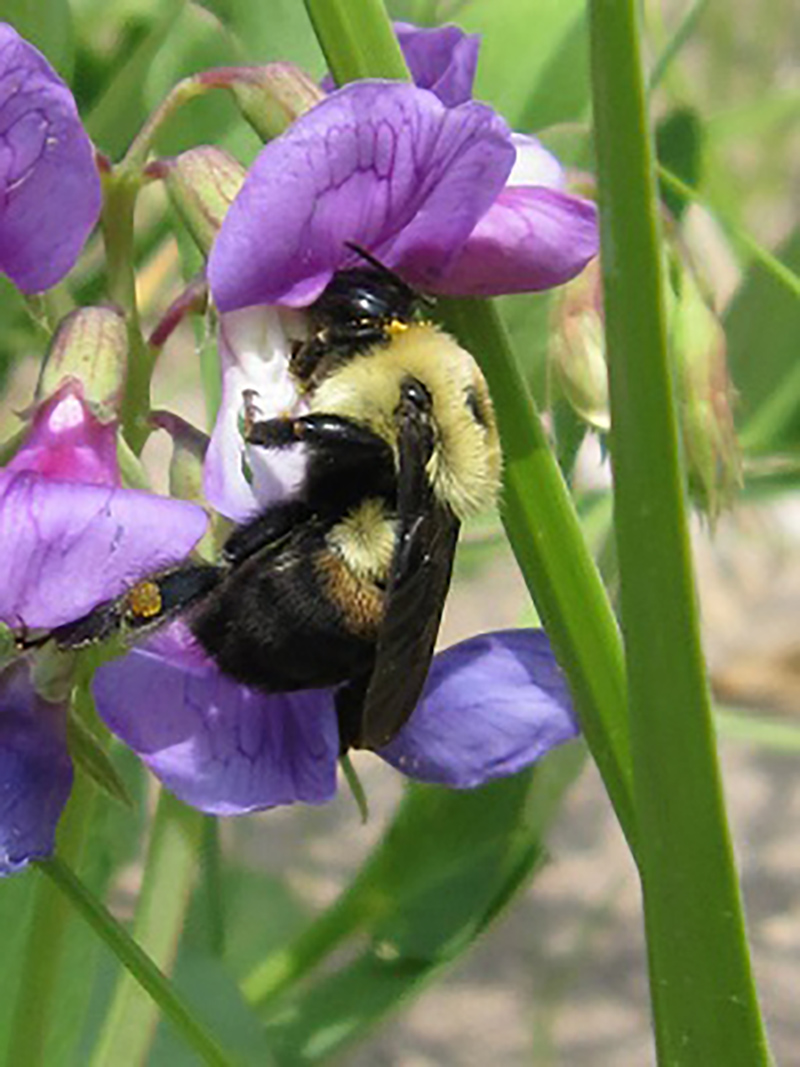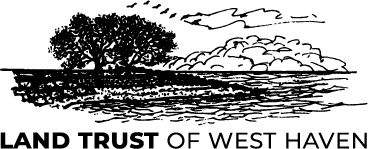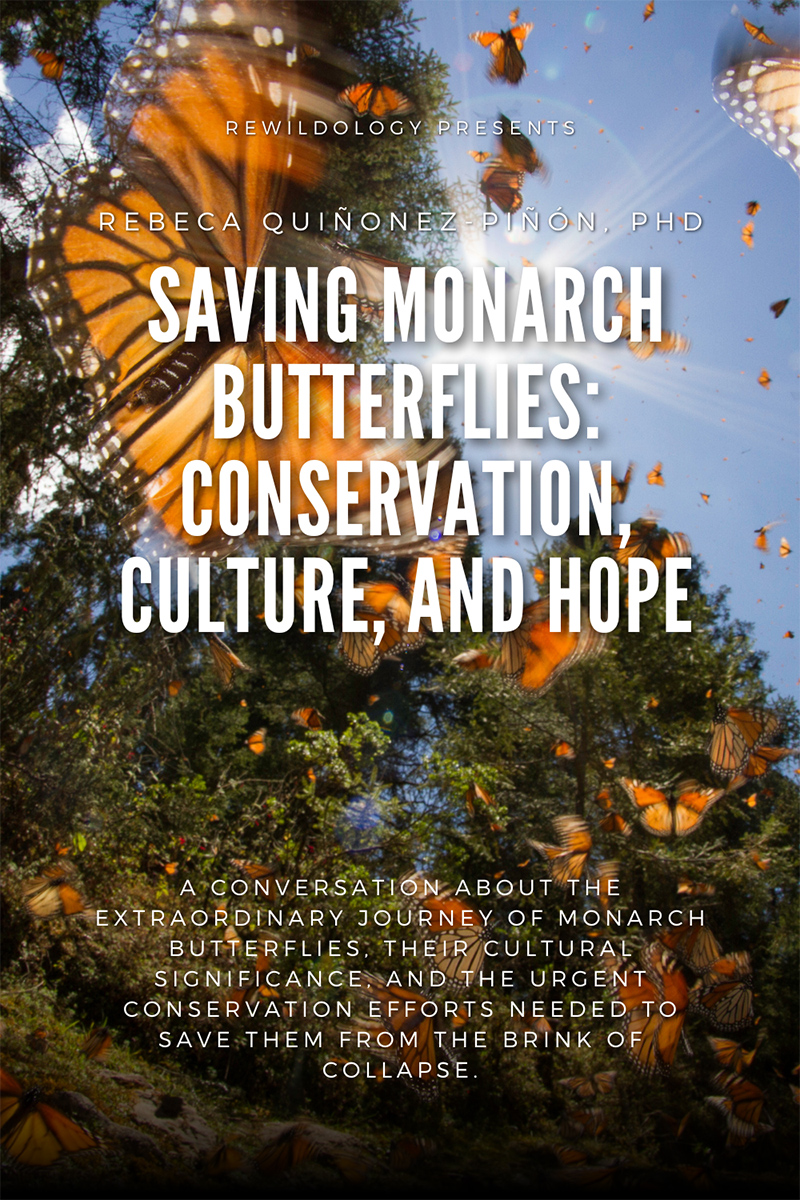Pollinators
Bees are particularly important, accounting for most of our insect-driven pollination. Connecticut is home to 378 bee species, including important pollinator groups like honey bees (which are non-native, but important for supporting our food supply), bumble bees, squash bees, mason bees, mining bees, leaf-cutter bees, longhorn bees, and sweat bees. The fine hairs covering many bees efficiently collect pollen and fertilize flowers. Most of these species live solitary lives, so instead of nesting with others in hives, they nest alone in soil, wood, or hollow stems.
Beyond bees, butterflies, moths, hummingbirds, bats, and even fireflies contribute to pollination, with nocturnal pollinators like moths and bats playing a crucial yet often overlooked role. Butterflies and moths use their long, tubular mouthparts to access nectar, often pollinating flowers specifically adapted to their unique feeding habits. Fireflies, admired for their bioluminescence, also play an important role as pollinators, feeding on pollen and nectar while reducing pest populations in gardens. These diverse pollinators collectively ensure the health and resilience of ecosystems.
Why Are Pollinators Important?
Pollinators provide a range of benefits that are vital to ecosystems and human well-being:
Biodiversity
Pollinators play a critical role in maintaining the diversity and health of ecosystems. About 75% of flowering plants rely on animal pollinators to reproduce. These plants, in turn, create habitats and provide food for countless species, supporting a complex web of life.
Ecosystem Services
Plants supported by pollinators prevent soil erosion, regulate water flow, and store carbon. These services help maintain environmental stability and combat the effects of climate change, such as flooding and rising temperatures.
Food Production
Pollinators are essential for producing many of the foods we eat. They enable the growth of fruits, vegetables, nuts, and seeds, including staples like apples, almonds, blueberries, and coffee. Without them, food production would decrease drastically, affecting both availability and variety.
Economic Impact
The agricultural industry heavily depends on pollinators. They contribute billions of dollars annually by improving crop yields and reducing the need for manual pollination. Their work supports farming jobs and lowers food costs for consumers.
Cultural and Aesthetic Value
Pollinators enhance the beauty of the natural world by allowing vibrant flowers to flourish. Many cultures celebrate pollinators as symbols of health, renewal, and connection to the environment, showcasing their importance in human history and tradition.
Challenges Facing Pollinators
Pollinators face numerous threats that are causing population declines globally:
- Pesticide Use: The widespread use of chemicals in agriculture, landscaping, and lawns harms pollinators directly and indirectly.
- Habitat Loss: Urbanization and the conversion of natural habitats reduce nesting and feeding areas for pollinators. See Shoreline Restoration Page
- Climate Change: Shifting temperatures and weather patterns disrupt the synchrony between pollinators and flowering plants, leading to mismatches in food availability. More frequent floods and droughts can also reduce their survival. See Climate Change Page
- Invasive Plants: Non-native species often outcompete native plants, reducing the quality of food and habitat available to pollinators. See Invasive Species Page
- Light Pollution: Artificial lights attract nocturnal pollinators like moths, preventing them from effectively feeding and pollinating.

Brown-Belted Bumblebee (Bombus griseocollis) on Beach Pea (Lathyrus maritimus)

Ruby-Throated Hummingbird (Archilochus colubris) on Red Columbine (Aquilegia canadensis)
How Can You Help Pollinators?
Protecting pollinators requires community action and individual efforts to create pollinator-friendly spaces. Here’s how you can help pollinators so they can keep doing their jobs:
- Be kind and gentle with pollinators, even the ones you are afraid of or don’t like.
- Plant Native Species: Native trees, shrubs, and wildflowers provide essential food and shelter. Include plants that bloom throughout the growing season to support pollinators year-round. Replace invasive plants with species like wild geranium, swamp milkweed, or New England aster. See Native Plants Page
- Minimize Pesticide Use: Avoid using harmful chemicals on your lawn or garden. If necessary, apply them sparingly and only when pollinators are inactive, such as at night. See Human Impact Page
- Create Habitat: Convert parts of your lawn (or all of it!) into natural areas with native plants. Leave patches of bare soil for ground-nesting bees and provide logs or brush piles for wood-nesting species. Allow leaves to remain in garden beds to protect overwintering pollinators.
- Rethink Lawn Care: Mow less frequently, leave clippings as natural fertilizer, and reduce the use of chemical fertilizers. These steps create healthier spaces for both pollinators and people.
- Dim Outdoor Lights: Reduce light pollution by using motion detectors, dimming outdoor lights, or using blackout curtains. These adjustments support nocturnal pollinators.
- Educate and Advocate: Share information about the importance of pollinators and support policies that protect their habitats, such as Connecticut’s Public Act 16-17, which restricts harmful pesticides and promotes pollinator-friendly practices.
By taking action to support pollinators, we can preserve biodiversity, sustain food production, and enhance the dynamic beauty of our natural world.
Additional Resources
Pollinator Pathway Connecticut – Provides resources and support for building a pollinator-friendly community, including town-specific activities, local regulations, and garden design ideas.
Protecting Pollinators from Pesticides – Provides an overview of pollination, the importance of pollinator health, specifically regarding bees, and the dangers to pollinators from pesticides.
Guide to Pollinators in Connecticut | CT DEEP – Guide that details the biology of many pollinators and suggests helpful conservation actions.
Pollinator Information | Connecticut Agricultural Experiment Station – Includes beekeeper registration and numerous fact sheets on conservation management.
Xerces Society – Offers publications, native seed vendor directories, and guidance for planning, establishing, restoring, and maintaining pollinator habitats tailored to the Northeast Region.

